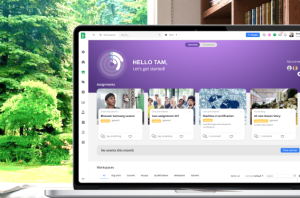People are motivated by feedback. This is especially true among the younger generation who are used to receiving immediate feedback on every aspect of their lives via social media. “They put something on Instagram, and in 15 to 20 seconds they’re expecting to know if it’s any good or not,” says management adviser Marcus Buckingham in the Washington Post. “So it’s crazy for them to come into a workplace that’s like, ‘We don’t care about you, and twice a year we’re going to tell you what the company wants.’”
Employee evaluations are often the main platform for employers and supervisors to give feedback as well as to guide and direct their staff. However, despite their importance, there are few organizational processes as fraught, both for the reviewer and the reviewee. Although reviews aim to improve employee performance and increase motivation, practically, they often do exactly the opposite. Evaluations can feel biased and unfair, decreasing motivation and damaging relationships between workers and their supervisors.
It doesn’t have to be this way. When done right, employee evaluations can be a helpful tool and source of useful information rather than an annoyance or cause of anxiety.
Feedforward, not feedback
In the digital age, organizations must be dynamic and fast-paced to survive. Many have forgone traditional hierarchical structures, choosing to emphasize teamwork, collaboration, and matrix-style management instead. Performance review structures must also be updated to adapt to the changing environment. Harvard Business Review states that “With their heavy emphasis on financial rewards and punishments and their end-of-year structure, (traditional performance reviews) hold people accountable for past behavior at the expense of improving current performance and grooming talent for the future, both of which are critical for organizations’ long-term survival. In contrast, regular conversations about performance and development change the focus to building the workforce your organization needs to be competitive both today and years from now.”
Easier said than done. If an annual review was a headache, without proper tools, ongoing reviews can be a migraine. An HR management platform can make the process friendlier and less overwhelming, both for the supervisor and the employee. An HR platform guides managers and employees through the best practices for setting goals for the future so that they don’t fall into the default of solely critiquing the past. Setting the goals and criteria together can enhance a sense of transparency and trust between the supervisor and the employee, making the process more pleasant and effective for both sides.
Digitization and data
There is an inherent tension between the qualitative and quantitative aspects of performance reviews. Quantitative reviews have the advantage of objectivity— the number of sales closed is the number of sales closed, whether the employee has a good rapport with his/her manager or not. On the other hand, they are often simplistic and miss out on key elements of the evaluation process such as teamwork, and cross-organizational or external factors.
Robust, digital HR tools can make it easier for managers to utilize quantitative and qualitative data effectively. They provide metrics, data, free text and comparisons that allow for fast and precise analysis that takes into account all of the factors that influence employee performance. Digital tools present the data in an organized, centralized view, helping supervisors understand what they are seeing, and making it easier to identify cross-organizational or departmental problems or achievements.
Supervisors can utilize data and feedback from other employees, and gain a “360-degree” perspective on the employee they are reviewing, something that is often neglected, especially in situations where the supervisor doesn’t know the employee well and may not work with him/her day-to-day. A data-supported, 360-degree evaluation is more accurate and better reflects all aspects of employee performance.
To sum it up
A positive employee evaluation process isn’t out of reach. With the right platform to guide you through the process, help you set transparent goals and view data from a 360-degree perspective, employee evaluations can become a source of growth and development for both the employees and the organization as a whole.
Blossom platform supports digital employee evaluation processes, and much more. To find out more about what Blossom can do for your organization, contact us.








